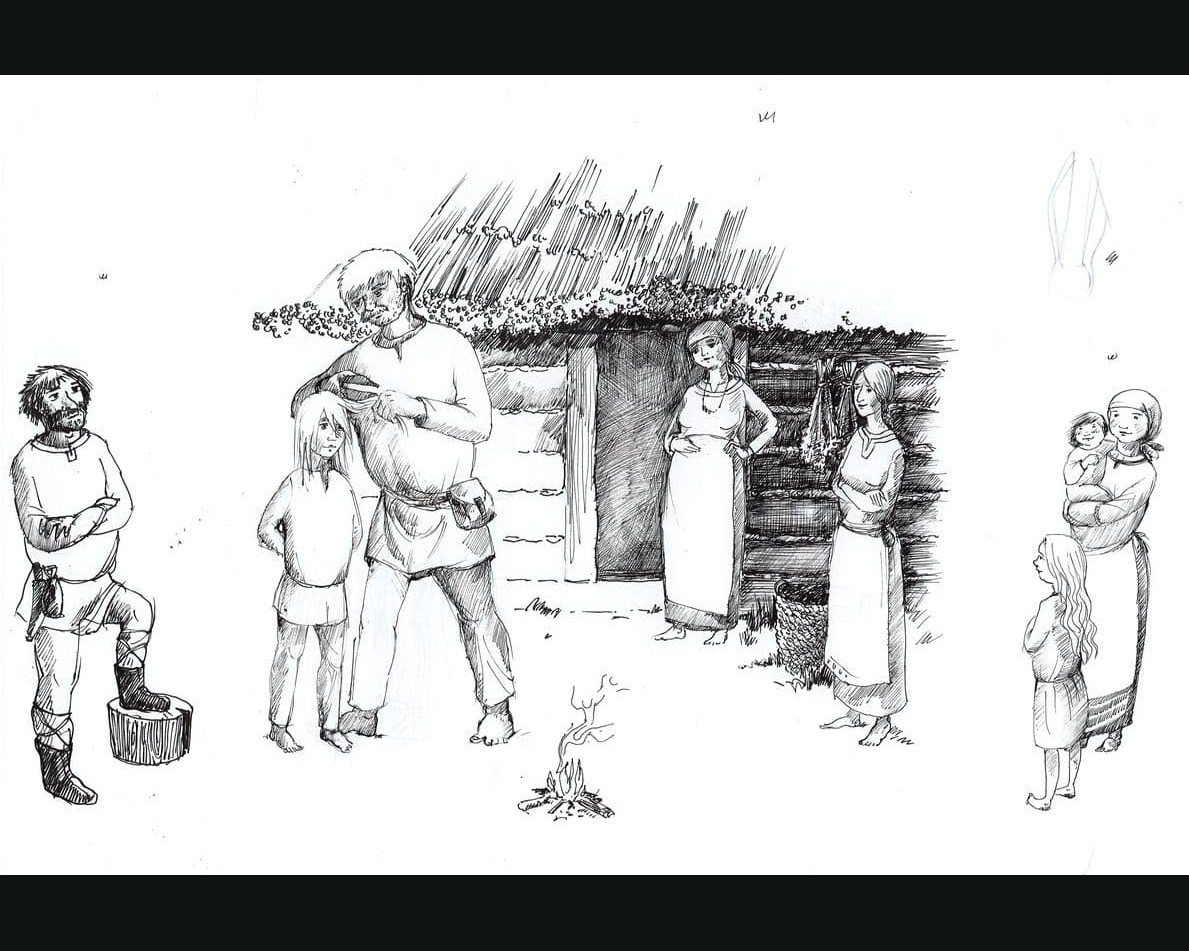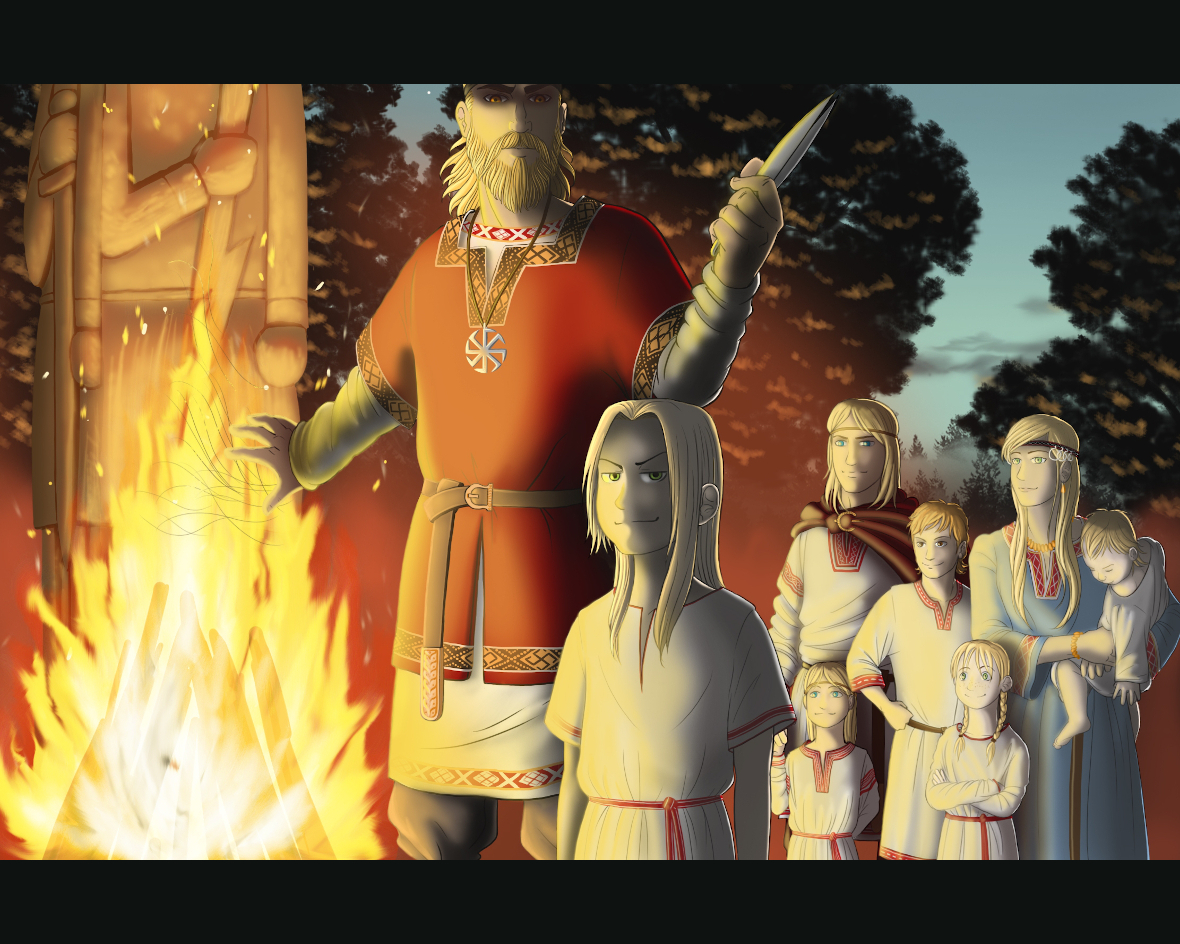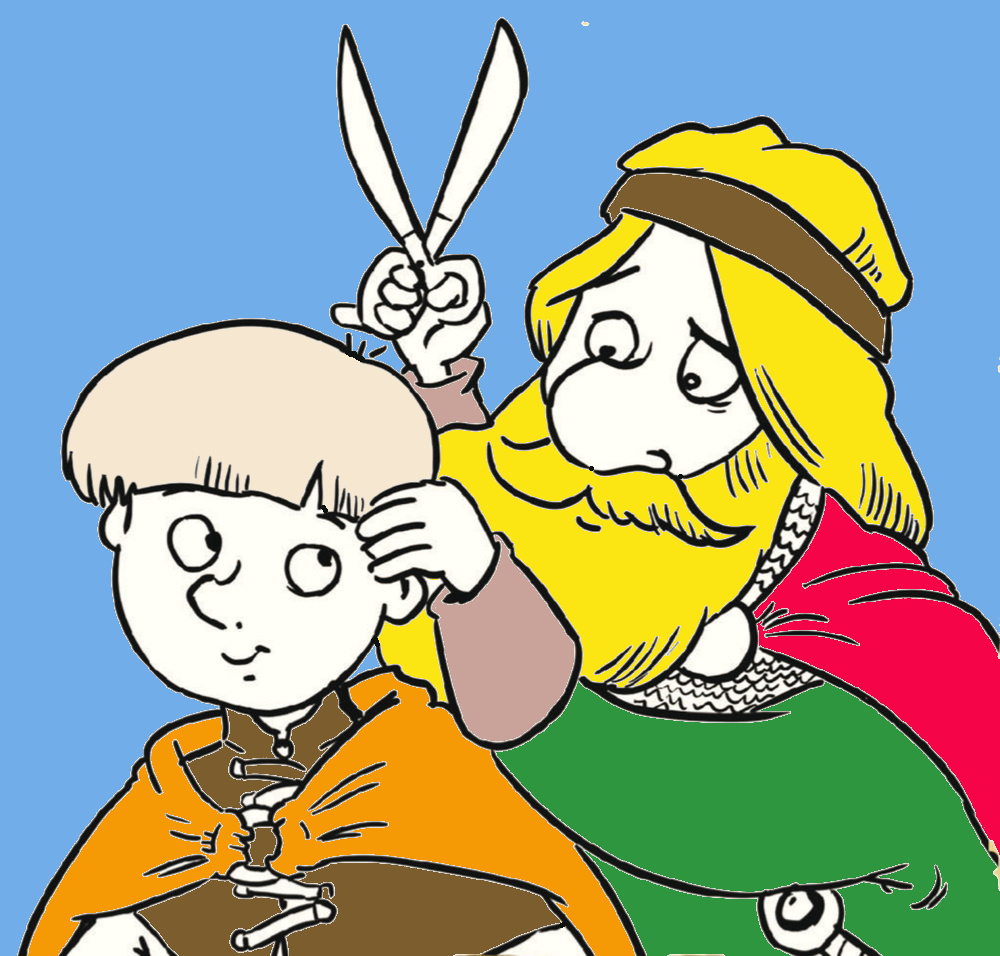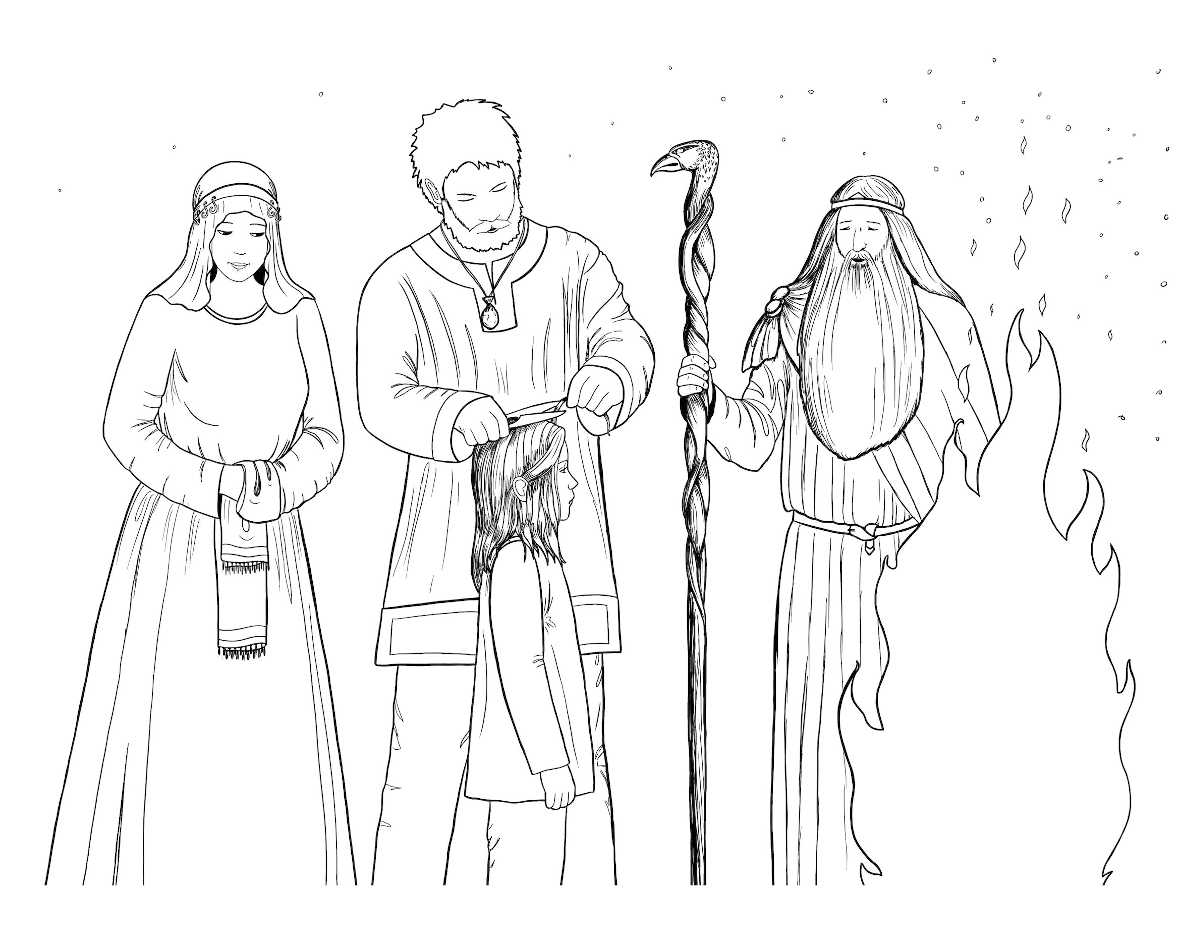During the postrizhiny ceremony Slovenians would hold the first cut hair high in their hand, Macedonians would place them in a sieve. In some Slavic regions locks of hair have to be destroyed or got rid of. For example, Slovaks, Belarusians and Ukrainians toss them into a fire or into a stove. Belarusians would say these words: “Valosiki gari, a galava ne bali” (Hair is on fire, but no headache). Sometimes the hair is thrown into the river or buried under a fruit tree. It is believed that the “ancestral” hair should not get to the birds. Slavs believe that if the birds weave that hair into the nest, the child will suffer from headaches.
ꏍ
In some other Slavic traditions, it was forbidden to destroy the trimmed hair. The first cut locks were kept by the Serbs in the house, in a special box with beeswax, Russians kept them in a flour sieve, Bulgarians – under a child’s pillow.
ꏍ
Actions with cut locks could depend on the gender of the child. Belarusians could put the boy’s hair in a barn for oxen, and Bulgarians buried it under a pear tree. The first hair locks of girls in Belarus were also thrown into a loom, and in Bulgaria and the Brest region they were buried under a willow, apple tree, cherry tree, or under a rose bush.
ꏍ
Do you know what was done with your first cut hair?
ꏍ
More interesting facts can be found in: “Slavic Antiquities” – encyclopedic dictionary in 5 volumes by Institute for Slavic Studies of the Russian Academy of Sciences.
Artist: Magdalena Szynkarczuk https://facebook.com/MagdalenaSzynkarczukArt
ꏍ
Postrizhiny among the Slavs: kinship, gifts and a feast
Among the southern Slavs, postrizhiny was an act of establishing kinship. In Serbia, the one who cut a child’s hair became his “postrizhiny father” (“шишано кумство”), in Bulgaria – the child’s brother. In Bosnia, if two families were in a quarrel, a member of the warring family was specially invited to cut the child’s hair, after which both sides would call truce. Such kinship was valued above blood or spiritual relationship.
ꏍ
The parents thanked the hair cutters. The Serbs gave them a shirt or weapons. Among the southern Slavs and Ukrainians, all the guests brought treats and gifts: pies, bread, salt, clothes for the child. Giving a gift to the child, to the one who cut the hair and to relatives and guests was considered mandatory. Among different Slavic nations, a “postrizhiny father” could give a child clothes and shoes, a red hat, a beehive, a sheep or other domestic animal. The child received gifts from his maternal grandfather and grandmother and from other relatives.
ꏍ
Postrizhiny celebration feast had different forms: from an ordinary family dinner to a rich ceremonial meal similar to a wedding, with the invitation of musicians and dances.
ꏍ
What other children related holidays do you know?
ꏍ
To be continued…
Artist: https://www.deviantart.com/mirogniewa
ꏍ
Postrizhiny – Slavic ritual
Postrizhiny in early childhood were common among all Slavs. The ceremony mainly extended only to boys, but sometimes to children of both genders – and was supposed to provide the child with good development, a happy fate, timely marriage, wealth, etc.
ꏍ
Most often, postrizhiny were done at home by the fireplace with a child sited on a table. The Eastern Slavs could also put child on a bench in the “red corner”. In Bulgaria, the child would be standing on dezha (special wooden tub for sourdough bread making) facing east. Ukrainians would sit the child on the fur coat. A spinning wheel, a comb, threads were put under the fur coat when cutting a girl’s hair, and when cutting a boy’s – a knife, a jointer, scissors, thereby wishing the child to acquire professional skills.
ꏍ
The method of cutting the first hair strands and the accompanying magical practices differ in various Slavic traditions. For example, among the Bulgarians, the one who cut the hair, washed the face of the child with water from a new jug, then “cut” the air with scissors and said (literally “glorified” – a verb derived from “slava”): “So that you grow old and gray, like Stara Planina (Balkan Mountains) and like your grandfather in old age”.
ꏍ
What rituals associated with the first haircut of children do you know?
ꏍ
To be continued…
ꏍ
Postrizhyny in Slavic tradition
Postrizhyny is the ancient Slavic ritual of the first haircut for a boy. In Serbia and Montenegro it was called “стрижене”, in Russia “пострижины”, in Bulgaria and Macedonia “стрижба”, in Poland “postrzyżyny”. This rite included cutting off strands of hair, magical rituals with it, dressing up a child in new clothes, exchanging gifts, good wishes, fortune-telling about the future, etc.
ꏍ
For Russians, the ritual hair cutting coincided with the beginning of the teachings – the knowledge transfer from the adults. Postrizhyny marked the recognition of the child as a person. Written sources testify about postrizhyny of 5–7-year-old sons of the nobility, which had an initiatory character and reflected family ties and customary law. For example, postrizhyny of Yuri and Yaroslav, the sons of the East Slavic duke Vsevolod (years 1192 and 1194), as well as the Czech duke Václav. After the ritual haircut, the prince was put into the saddle of his father’s horse, “so that he could step into his father’s stirrup”, in other words to follow his father steps. This meant the recognition of the son by the father. Also, the father’s shirt was put on him, and the whole ceremony was followed by a feast. Gallus Anonymus also describes postrizhyny of the legendary founder of the Polish Piast dynasty – Siemowit.
ꏍ
And how was the first haircut for you or for your children?
ꏍ
To be continued…
Artist: Małgorzata Lewandowska https://www.instagram.com/art_by_goria/
https://www.facebook.com/ArtByGoria
ꏍ

